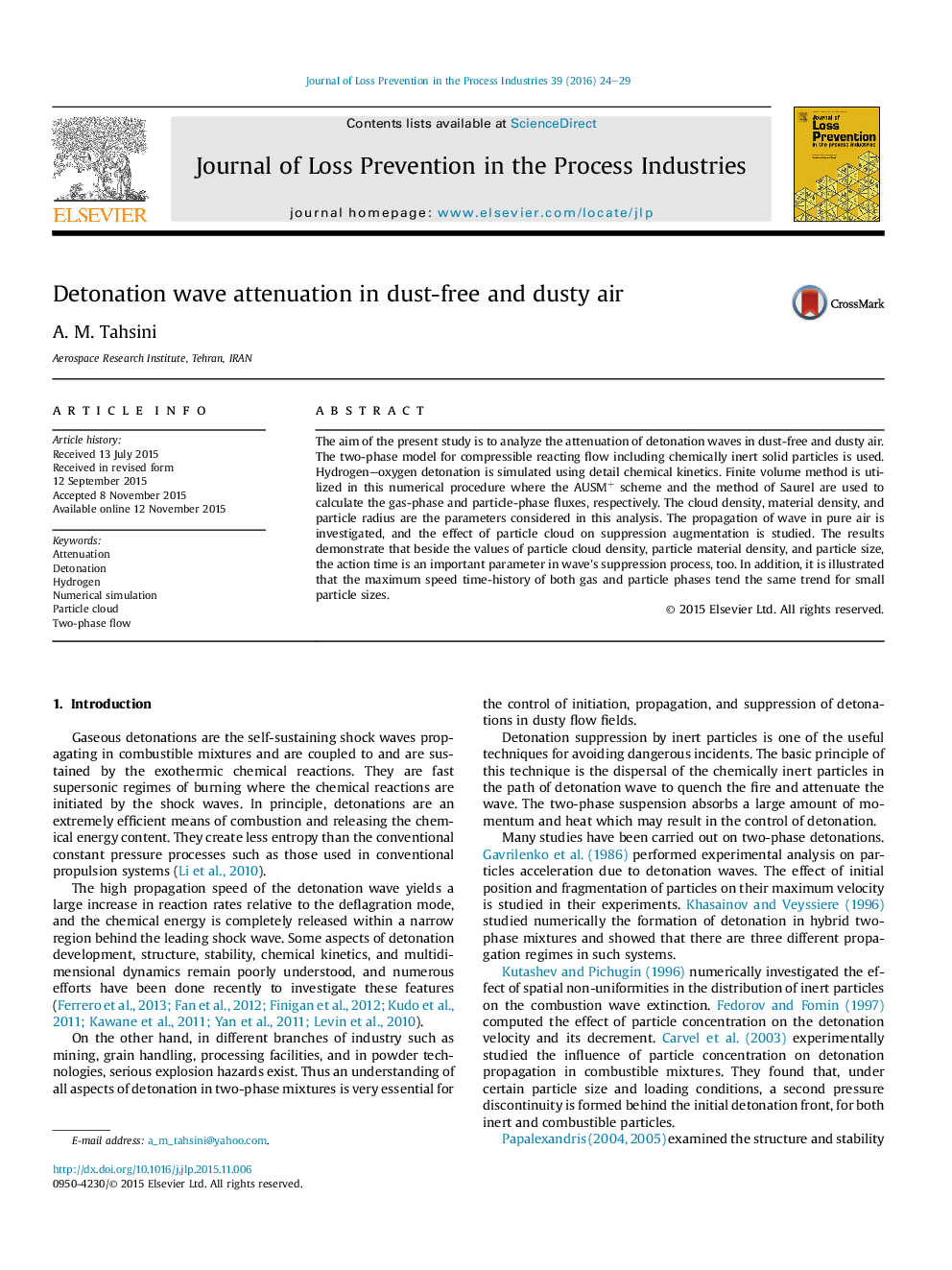| Article ID | Journal | Published Year | Pages | File Type |
|---|---|---|---|---|
| 586070 | Journal of Loss Prevention in the Process Industries | 2016 | 6 Pages |
•Hydrogen–Oxygen detonation is simulated using detail kinetics.•Dust-free and dusty air is considered as an attenuating field.•Effect of particle cloud density, material density and particle radius are investigated.•The importance of action time is illustrated.•Effect of particle cloud on suppression augmentation is analyzed.
The aim of the present study is to analyze the attenuation of detonation waves in dust-free and dusty air. The two-phase model for compressible reacting flow including chemically inert solid particles is used. Hydrogen–oxygen detonation is simulated using detail chemical kinetics. Finite volume method is utilized in this numerical procedure where the AUSM+ scheme and the method of Saurel are used to calculate the gas-phase and particle-phase fluxes, respectively. The cloud density, material density, and particle radius are the parameters considered in this analysis. The propagation of wave in pure air is investigated, and the effect of particle cloud on suppression augmentation is studied. The results demonstrate that beside the values of particle cloud density, particle material density, and particle size, the action time is an important parameter in wave's suppression process, too. In addition, it is illustrated that the maximum speed time-history of both gas and particle phases tend the same trend for small particle sizes.
